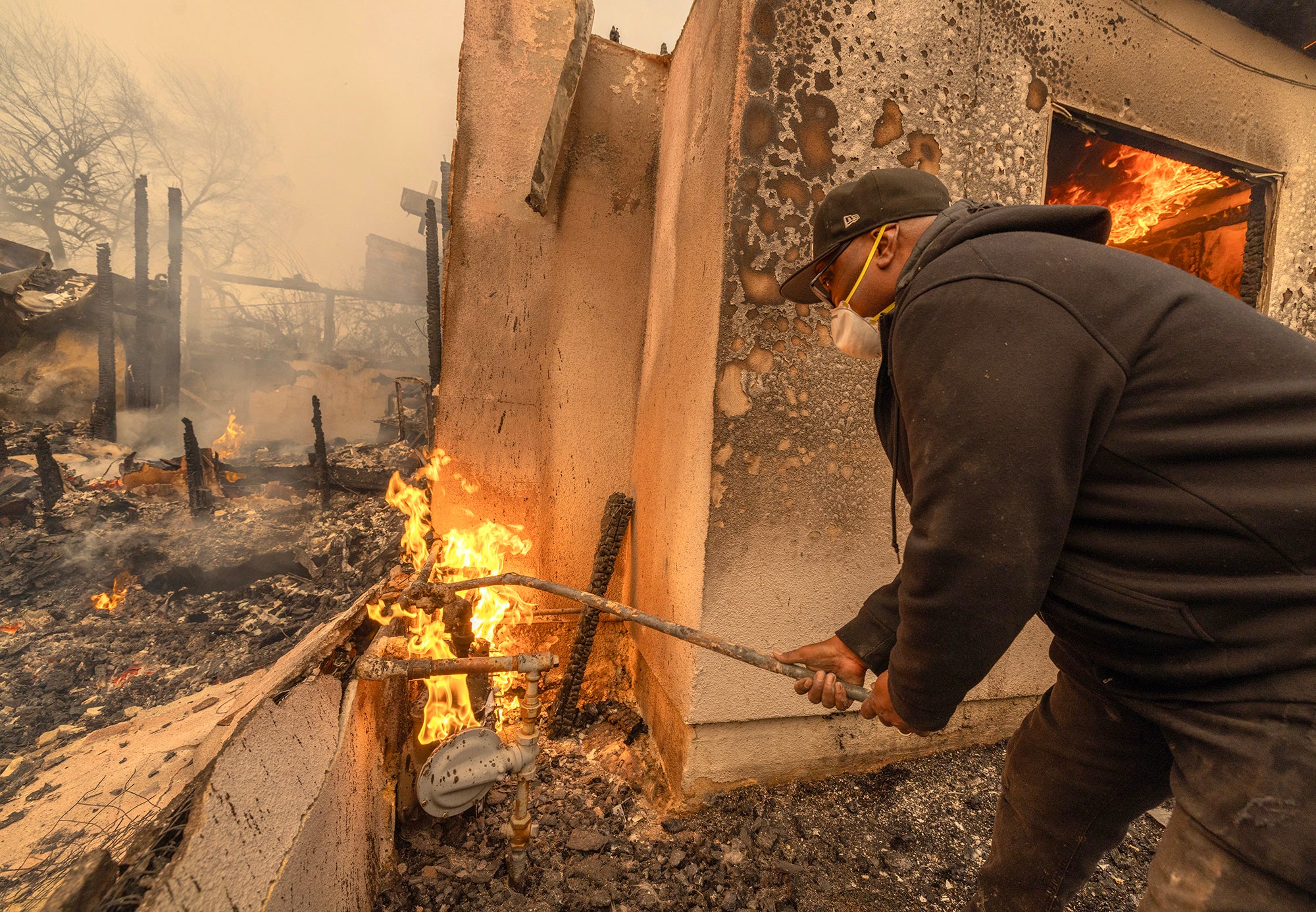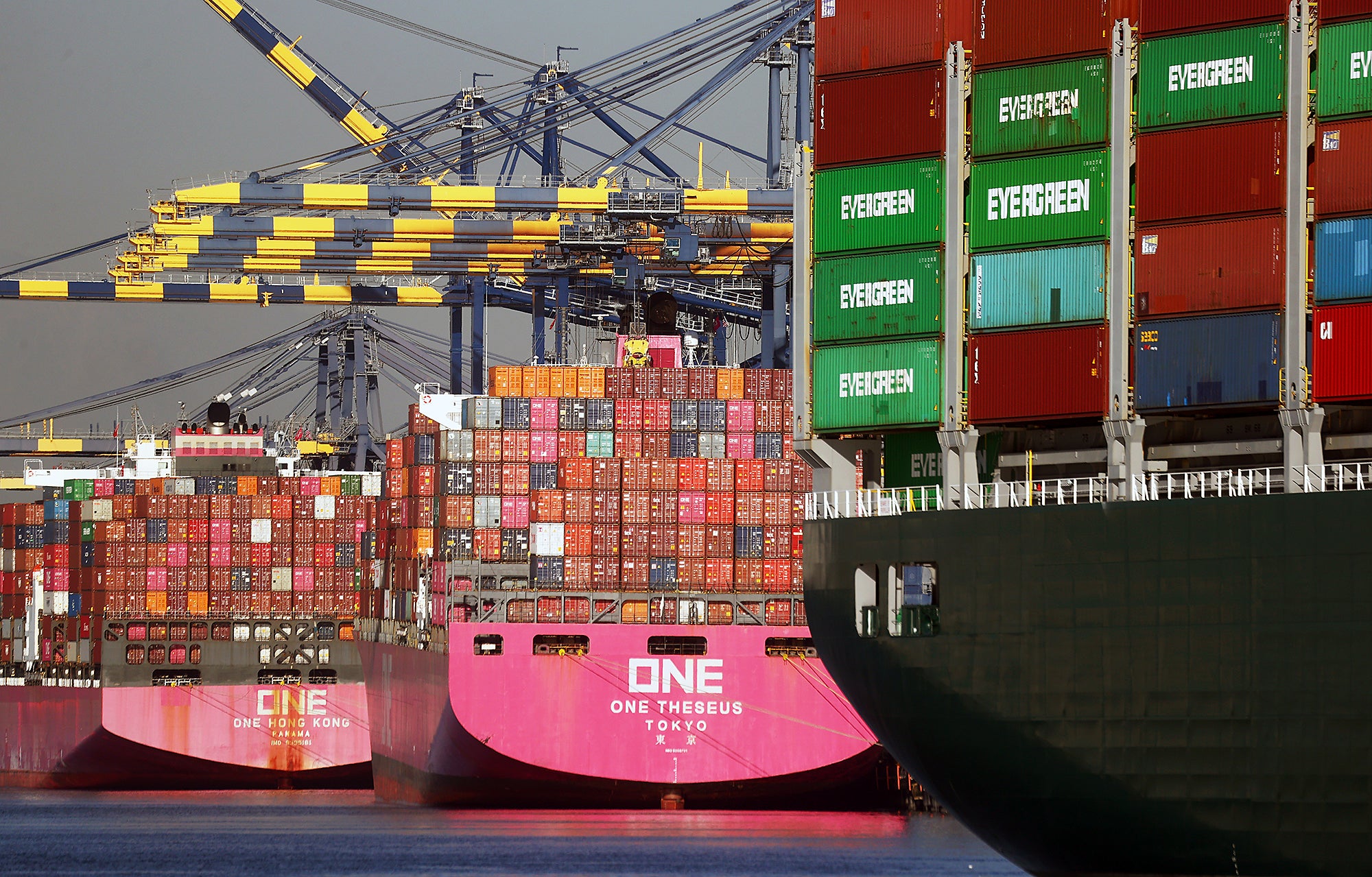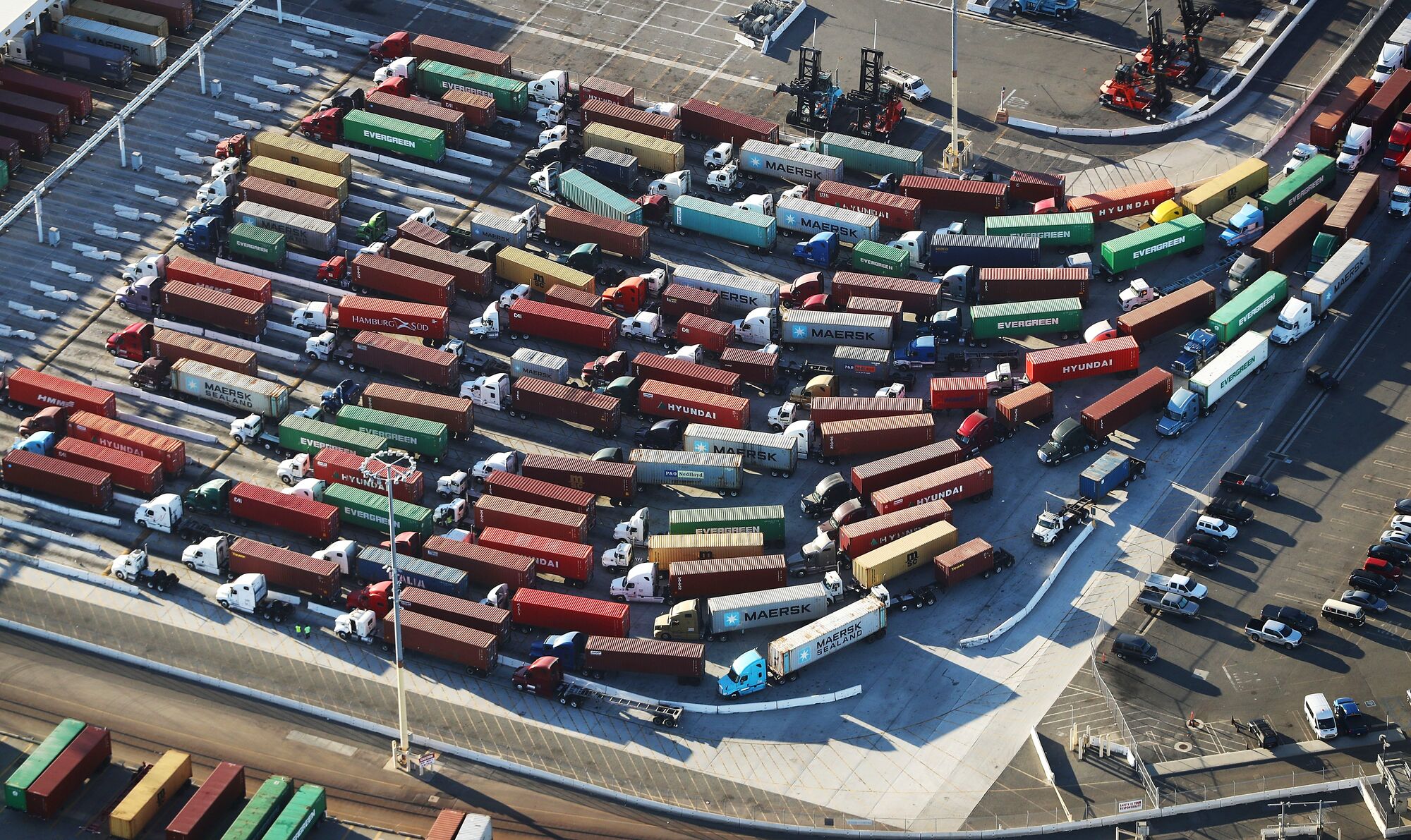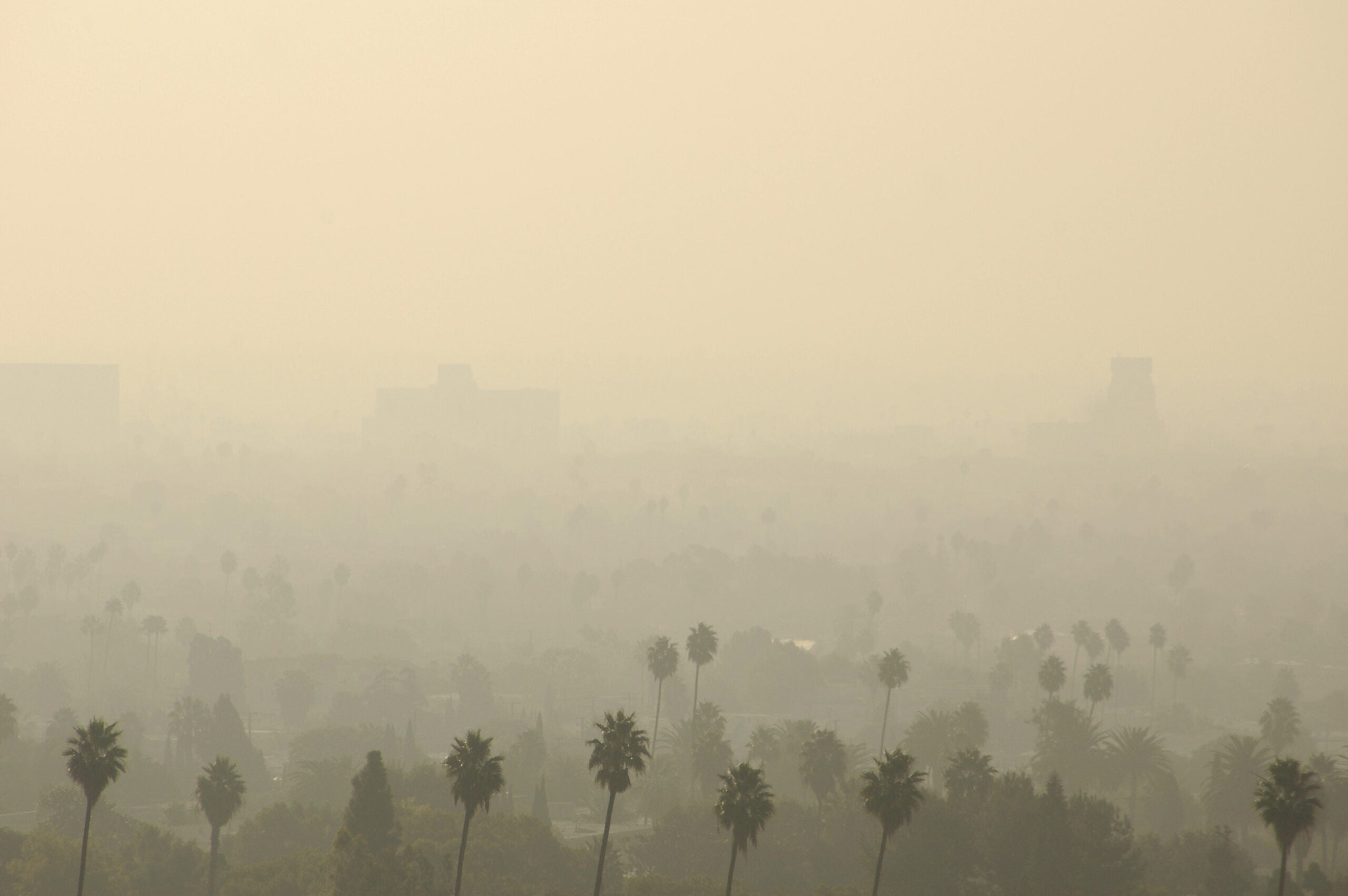Trump Wants to Make America Smoggy Again. California Legislators Are About to Make It Worse
We know where the Trump administration stands on clean air protections, but why are state legislators in California pushing a pro-pollution bill like SB 34 forward?
UPDATE: On October 13, Governor Newsom stepped in and vetoed SB 34 in a win for clean air and common sense. You can see our statement on the Governor’s veto here.
California legislators seem to have stopped caring about cleaning the Golden State’s polluted air — an abdication that could not be happening at a worse time.
It was already proving to be a banner year for bad air in our state. 2025 began with LA wildfires that pumped our skies with toxic pollution, before the Trump administration stepped in and took a wrecking ball to federal policies that clean our air, and Congress and the president unlawfully overturned the waivers for California’s vehicle standards, which were slated to provide $45 billion in health savings. It is without a doubt a difficult time to be fighting smog.

A neighbor uses a wrench stuck into a pipe to turn off a burning gas line at the Eaton Fire on January 8, 2025 in Altadena, California. (David McNew / Getty Images)
But it’s not just anti-science officials in D.C. — when it comes to rolling back protections in California, the call is also coming from inside the house. California legislators are backing a dangerous piece of legislation, SB 34, that would tie up new clean air protections for communities living near the Ports of Los Angeles and Long Beach and send a chilling effect to air regulators in other parts of the state. That’s why over five thousand Californians around the state have sent messages to their legislators urging them to vote no on this bill, and why the Bay Area Air District is formally opposing the bill.
With this bill, California legislators would further the Trump administration’s agenda to gut California’s clean air authority and progress, risking the health of Californians who are forced to live with the most polluted air in the country and making it harder for California to reach federal standards for clean air. While narrowed from its original destructive version, the bill could stymy a public process already years underway in Southern California.
This bill is being proposed because the shipping industry’s lobbyists and political machine like to claim the sky is falling every time a new clean air protection kicks in or cargo volumes dip. But I’ve seen industry groups at the Ports of LA and Long Beach fight clean air standards in any and every economic context in California, whether their numbers are up or down, and I’m sick of seeing the industry get away with crying wolf.
These two ports handle more cargo than any other ports in the country, managing roughly a third of all containerized cargo that comes into the United States. They’re economic juggernauts, not struggling start-ups. They’re also the largest fixed source of air pollution in California.
And while cargo volumes dipped in May, the Port of LA just had the busiest June in its 117 year history. Regardless, it would make no sense to respond to the short-term chaos at the ports by preventing any clean air progress into the next decade with SB 34. It’s perplexing that the state would tie our air regulators’ hands just as the Trump administration is trying to do the same from D.C.

Shipping containers are stacked on container ships at the Port of Los Angeles in San Pedro, California. (Mario Tama / Getty Images)

Shipping containers stand attached to trucks at the Port of Los Angeles, the nation’s busiest container port (Mario Tama / Getty Images)
Not only is SB 34 taking the state in entirely the wrong direction, but intimidation tactics from industry are leaving coastal cities under threat in another arena: state officials are suggesting weakening California’s existing rule to curb ship pollution in our ports. The At-Berth Rule requires ships to plug into clean shore power instead of running on incredibly dirty fuels when they’re in our ports — or, to capture their own pollution or pay into a remediation fund. The rule has been so successful that last year 94% of ships coming into California’s ports plugged into shore power.
Last month, the California Energy Commission suggested taking a look at exemptions for oil tankers, and it is unclear whether the lobbyists for shipping companies will try to capitalize on their oil buddies’ efforts to gut clean air protections. (For a sense of the oil industry’s brazen approach, see this Politico interview in which the head of Chevron says legislators should “pause” the At-Berth rule “for a minimum of 10 or 15 or 20 years.”) Notably, shipping companies have not objected publicly to the oil industry’s craven tactics to take away this vital public health protection, so we can only expect they are trying to capitalize on this moment to deregulate and pollute our coastal communities.
For anyone feeling confused about how ships affect California’s air pollution, it’s helpful to look at what kind of fuel large container ships burn. Bunker fuel is made from the absolute dredges of petroleum processing with the residue left after gas and diesel is refined from crude oil. While there are some slightly cleaner fuel options with less sulphur, you do not want ships running on these crude fuels near where people live.
The shipping industry loves it because it’s cheap, our lungs hate it because it’s some of the dirtiest fuel on earth.

Although air quality has improved over the years in Los Angeles, Calif., bad air days still blanket the city and surrounding region with smog.
(Cate Frost / Shutterstock)
That’s why LA and Long Beach began investing in shore power over twenty years ago — and why the technology is being used in ports around the world, from Germany to China. Letting these foreign shipping companies off the hook for technology they’ve implemented for decades is foolish.
California’s leaders need to find their way — many are lost, and it shows. Instead of hamstringing the air regulators seeking to clear our skies, we should empower our air agencies and task them to search high and low for ways to make up for the losses we’re seeing.
The last thing we need is for our state’s legislators to inadvertently carry water for the Trump administration just as California needs to be doing everything it can to fight smoggy skies. SB 34 is a terrible idea for California, and we hope to see legislators step up to block not only this bill, but every other opportunistic campaign this year to roll back the life-saving standards on our books.
The California Regional Office fights for the rights of all to a healthy environment regardless of where in the state they live; we fight to protect the magnificent natural spaces and wildlife found in California; and we fight to transition California to a zero-emissions future where cars, trucks, buildings, and power plants run on clean energy, not fossil fuels.
